Art World
Here Are the 15 Biggest Art-World Controversies of the Year
From Dana Schutz's notorious painting to divisive animal art at the Guggenheim, 2017 was chock full of debate, discussion, and protest.
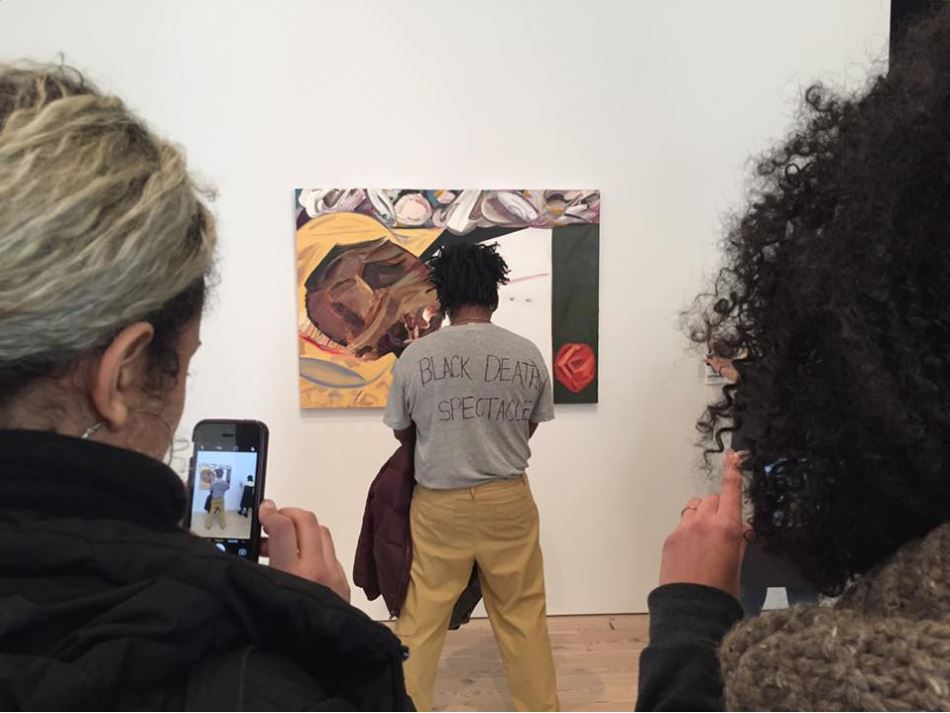
From Dana Schutz's notorious painting to divisive animal art at the Guggenheim, 2017 was chock full of debate, discussion, and protest.

Julia Halperin &
Javier Pes

This year saw unprecedented tumult in the real world—and in the art world, too. There were fiery debates over cultural appropriation and the definition of censorship; a legal tussle over deaccessioning at the Berkshire Museum; and front-page exposés on the Metropolitan Museum of Art, the cultural philanthropy of the Sackler family, and the buyer of Leonardo’s Salvator Mundi.
Below, we recount the biggest headlines and controversies of the year in chronological order. Just don’t expect the debates they ignited to end in 2017.
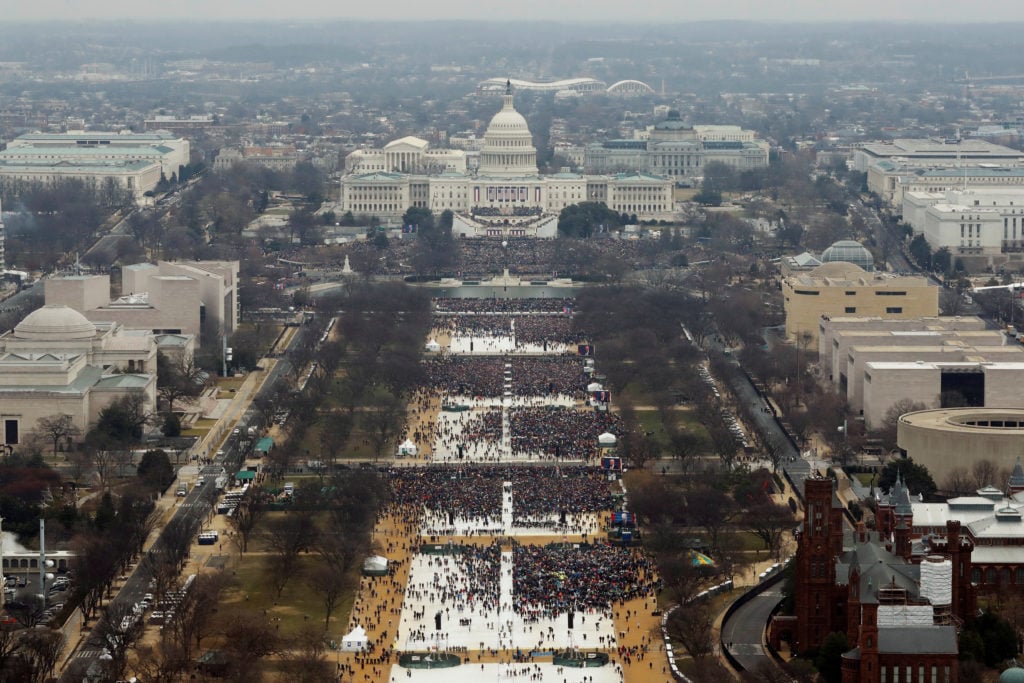
Trump’s inauguration was backed by a number of high-profile art-world figures. (Photo by Lucas Jackson – Pool/Getty Images)
While many artists and other art professionals were figuring out how best to protest the inauguration of President Donald Trump, a number of high-profile art collectors were helping to fund it. Billionaire hedge fund manager and mega-collector Steve Cohen was a major donor to Donald Trump’s inauguration parade, it emerged, handing over $1 million for the sparsely attended event on January 20. Other art-world figures who backed the festivities included cultural philanthropist Henry Kravis ($1 million) and collector Steve Wynn, via his company Wynn Resorts ($700,000). Iranian-American former diplomat Hushang Ansary and his wife Shahla Ansary, who helped back the new Islamic art display at the Museum of Fine Arts, Houston, reportedly gave $2 million.
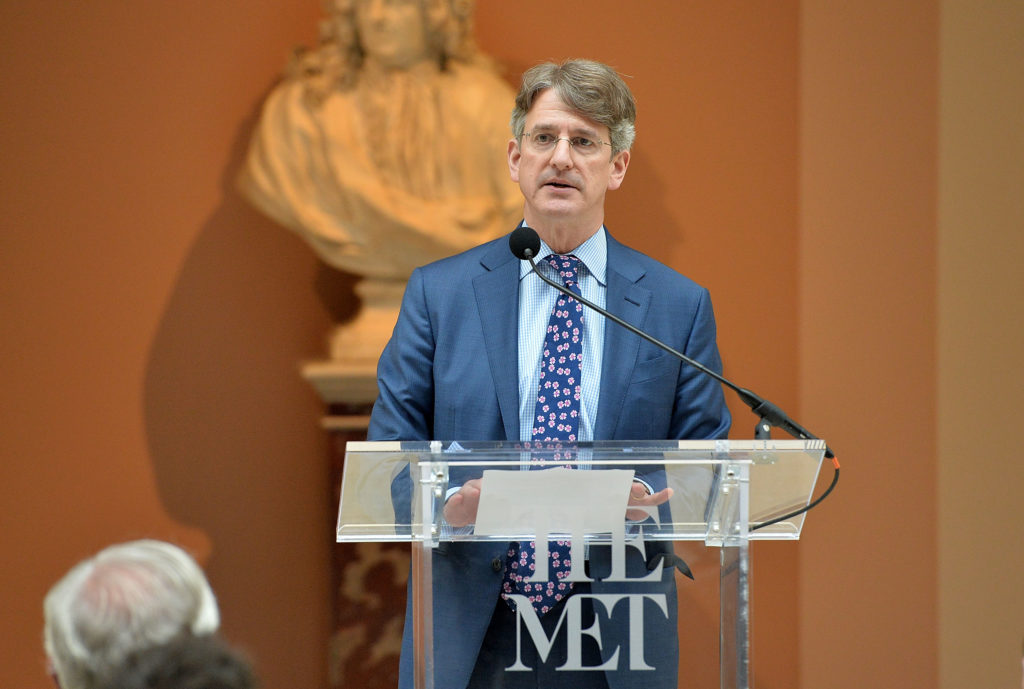
Thomas P. Campbell speaking at the Met in 2016. Photo: Slaven Vlasic/Getty Images.
In a bombshell series of articles, the New York Times uncovered unprecedented tension and turbulence at the country’s largest art museum. In February, a front-page story asked whether the Met was “a great institution in decline” and recounted the museum’s mounting deficits and stalled expansion plans. It “went off like an atomic bomb” on Fifth Avenue, according to Vanity Fair. Just over three weeks later, the museum’s director Thomas Campbell resigned. In April, the Times followed up with a report about “a close personal relationship” between the director and a member of the digital media team, which the paper said contributed to “a years-long erosion of respect for his authority and judgment.” (Campbell, for the record, had a different take on his departure, and an investigation conducted by the museum found no wrongdoing.)
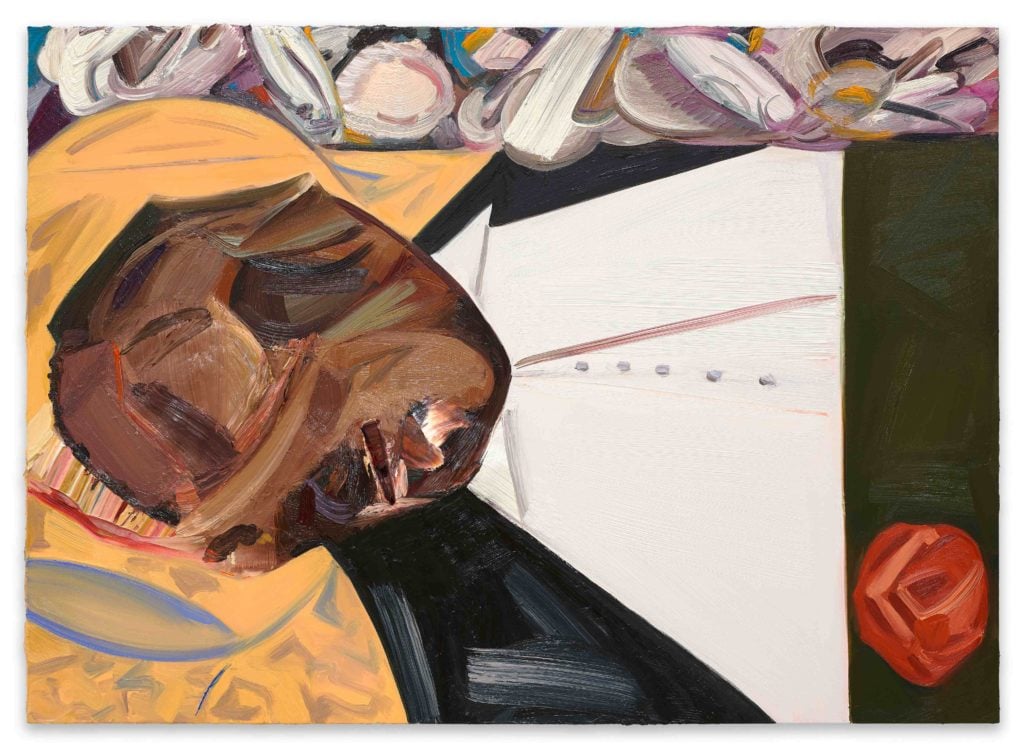
Dana Schutz, Open Casket (2016). Oil on canvas. Collection of the artist; courtesy Petzel, New York.
Perhaps the most divisive art-world moment of the year came in March, when Dana Schutz’s Open Casket (2016), a portrait of the disfigured corpse of Emmett Till, debuted at the Whitney Biennial. The painting set off a heated debate over whether a white artist like Schutz has the right to make art that draws on trauma experienced by the Black community. On opening weekend, the artist Parker Bright stood in front of the painting wearing a t-shirt scrawled with a Sharpie to read “Black Death Spectacle.” Soon after, British artist Hannah Black wrote a widely shared open letter that suggested the painting be removed from the show and destroyed. The public reckoning spilled out into the pages of newspapers, magazines, and Facebook pages—and even followed Schutz to Boston, where her solo exhibition at the city’s ICA drew opposition. Months later, the debate over the painting continues to shape conversation about cultural appropriation, censorship, and who has the right to depict another’s suffering.

Sam Durant, Scaffold. Courtesy of Sarah Cascone.
The ink on thinkpieces about Open Casket had barely dried when another work of art—Scaffold by Sam Durant—set off a media firestorm. The sculpture draws on the gallows built for seven major executions in US history, including the largest mass execution ever to take place in the US, which killed 38 Dakota Indians in 1862 in Mankato, Minnesota. The work was destined for the Walker Art Center’s Minneapolis Sculpture Garden. Following outcry from the Dakota nation—who said the work trivialized a traumatic chapter in its history—Durant and the Walker’s director Olga Viso agreed to remove Scaffold. After lengthy discussions, Dakota nation decided to ceremonially bury the sculpture at an undisclosed location. Although the Walker was largely praised for its handling of the situation, Viso announced she would step down from her post several months later—and some attributed her departure to Scaffold.
In June, the debate over cultural appropriation surfaced again when the Walker Art Center opened a retrospective of the work of artist Jimmie Durham. (It’s been a challenging year for the Walker!) Ten Cherokee artists, curators, and other professionals published a forceful editorial disputing the artist’s Native American heritage and arguing that the ambiguity surrounding his identity does a disservice to “legitimate Native artists and cultural leaders.” Others came to the artist’s defense, noting that neither Durham nor the show’s curators sought to position the artist as a representative of all Native American experience and that there is no one way to define Native identity. The show is now on view at the Whitney Museum in New York.

The Berkshire Museum, courtesy of Wikimedia commons.
A museum’s decision to sell off work from its collection is often controversial, no matter the circumstances. But the Berkshire Museum’s plan to auction 40 works by artists including Norman Rockwell and Albert Bierstadt—and use the proceeds to replenish its endowment and fund an architectural expansion—was particularly combustible. Opponents claimed the museum was exaggerating the precariousness of its financial state to justify the sell-off, which violated the wishes of its donors. After months of legal wrangling, a judge put the planned sell-off on hold the day before the first batch was due to be auctioned at Sotheby’s. The Massachusetts Attorney General now has until January 29 to complete a legal review of the plan.
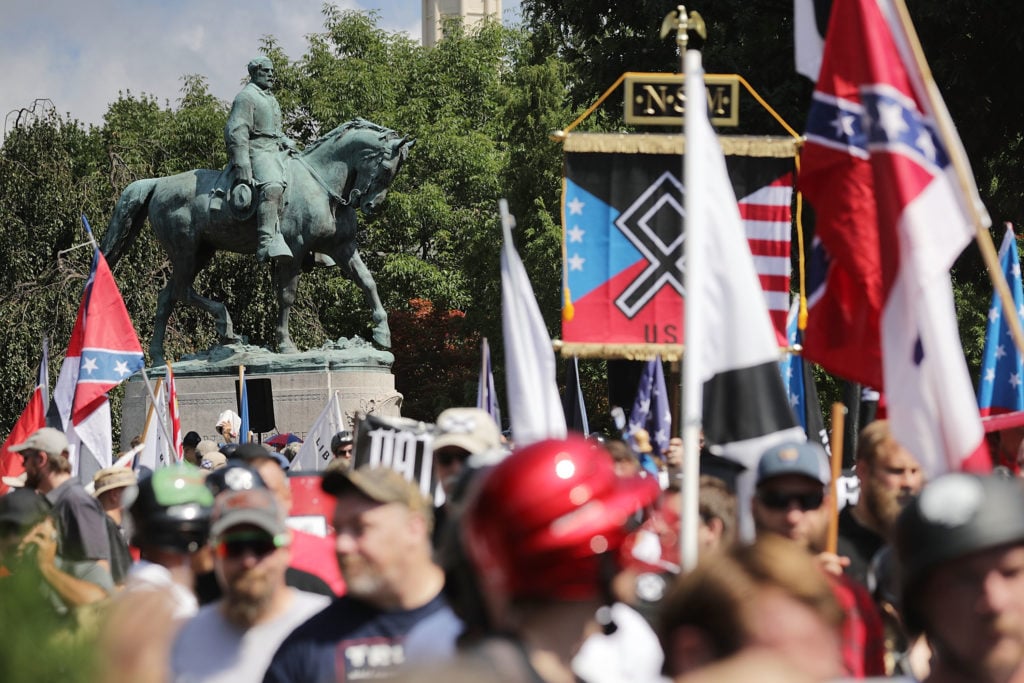
The statue of Confederate General Robert E. Lee stands behind a crowd of white nationalists, neo-Nazis and members of the “alt-right” during the “Unite the Right” rally on August 12 in Charlottesville, Virginia. (Photo by Chip Somodevilla/Getty Images)
On August 11, white nationalists descended on Charlottesville, Virginia, to protest the removal of a monument to Robert. E. Lee from Emancipation Park. After a day of violent clashes—leading to three deaths and dozens more injured—officials in cities across the US began to renew calls to remove Confederate monuments from public grounds. In recent months, Senator Cory Booker introduced a bill to remove these statues from the US Capitol; New York held a series of hearings about the fate of “symbols of hate” in the city; and Memphis took down two Confederate monuments, including one of a KKK leader. Although almost every historian surveyed by artnet News believed the sculptures should be removed, not everyone was in agreement about what to do with them—or what, if anything, should replace them.

Protesters at Laura Owens’s retrospective at the Whitney. Photo courtesy of Decolonize This Place, via Instagram.
How much does the art world contribute to gentrification? The question has been at the heart of a roiling debate in Los Angeles (and, to a lesser extent, New York) this past year. Ground zero for this debate is Boyle Heights, a working-class, largely Latino neighborhood in LA that has become a popular destination for upstart galleries. In February, PSSST Gallery closed after less than a year following sustained anti-“artwashing” protests. The artist Laura Owens—who has a studio and project space in the neighborhood—said she has received death threats. Meanwhile, in New York, the debate over art’s role in gentrification came to a head this fall, when James Cohan Gallery mounted an exhibition of work by Omer Fast in its Chinatown space that community members said perpetuated harmful stereotypes and illustrated just how little galleries interact with their surrounding communities.
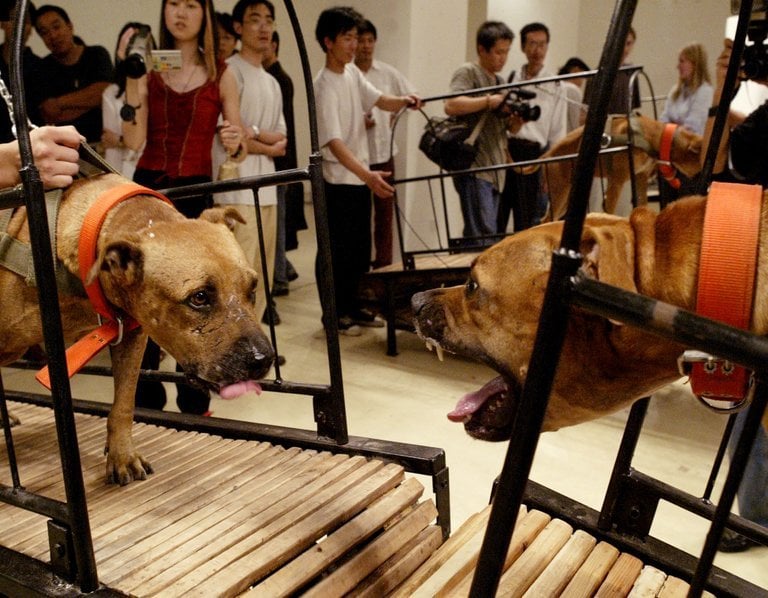
Sun Yuan and Peng Yu’s Dogs That Cannot Touch Each Other. Courtesy of Galleria Continua, San Gimignano, Beijing, Les Moulins, Habana.
It is rare for an exhibition to seep outside the hermetically sealed art world and capture the attention of the general public. But the Solomon R. Guggenheim Museum’s exhibition “Art and China After 1989: Theater of the World” did just that—even though the museum may have ultimately wished it hadn’t. In the lead-up to the show, animal rights activists began protesting the selection of three works, including Sun Yuan and Peng Yu’s video Dogs That Cannot Touch Each Other, which documented a 2003 performance in which pit bulls were chained to treadmills. The museum ultimately withdrew the works, citing “explicit and repeated threats of violence.” The uproar over the exhibition—and the museum’s response to it—laid bare urgent questions about the public’s relationship to institutions. “Are [museums] just a place for entertainment that should only present things that are lovely or morally agreeable, or does a show like ‘Theater of the World’ also represent a historical examination of another culture and another time?” our critic Ben Davis asked. “Even if aspects of it are deeply troubling or repugnant, should they be presented if they were important?”
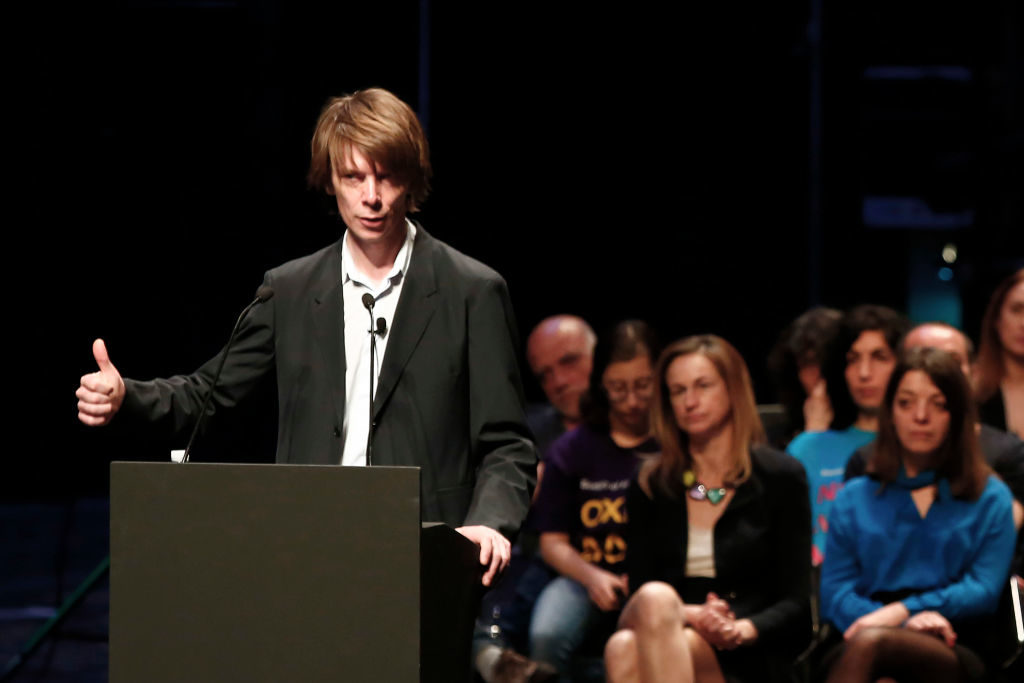
Adam Szymczyk, the artistic director of documenta 14, speaks at a press conference for the exhibition on April 6 in Athens, Greece. Photo by Milos Bicanski/Getty Images
A number of artworks in this year’s documenta exhibition, which took place in both Kassel and Athens, focused on the theme of national debt. So it is perhaps ironic that coverage of the quinquennial’s own debt threatened to eclipse the contents of the exhibition itself. The ambitious, two-city show left documenta’s parent company with a deficit of $6.3 million; the city of Kassel and the state of Hesse had to step in to help cover the shortfall. The fiasco led to fierce debates over who is responsible for controlling the costs of large-scale, ambitious art events; the role government should play in such projects; and the long-term viability of international biennials in general. In the wake of the controversy, Annette Kulenkampff, the CEO of documenta’s parent company, announced she would step down in June, a year before her contract was due to expire.
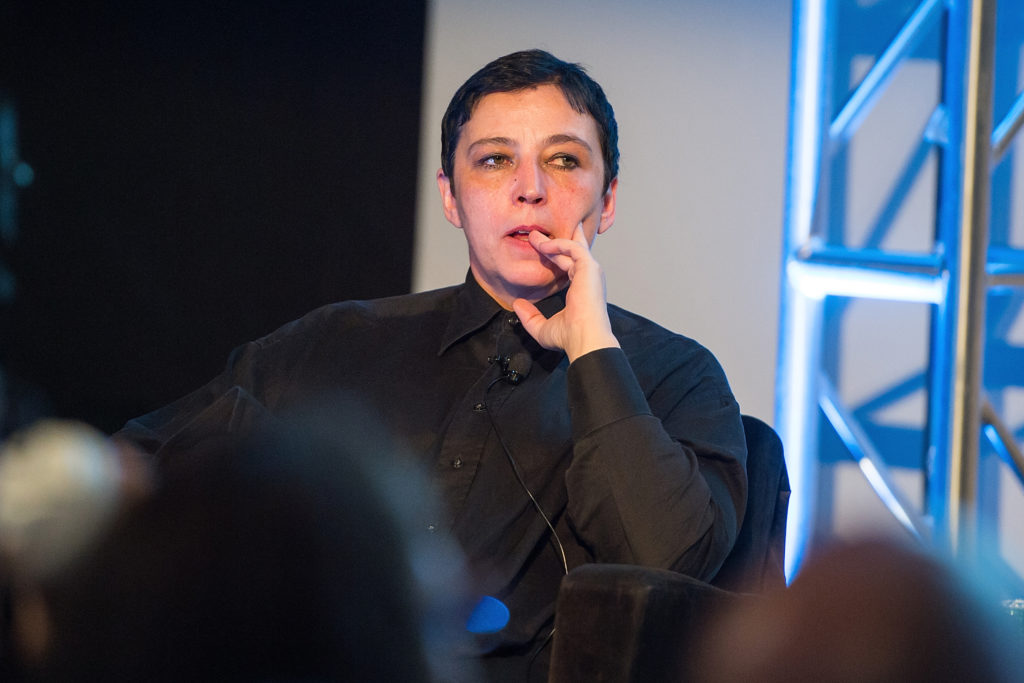
Beatrix Ruf. Photo: Michael Stewart/Getty Images.
In September, the German-born director of Amsterdam’s Stedelijk Museum, Beatrix Ruf—a tastemaker and fixture on the art world’s “most powerful” lists—announced her abrupt resignation. Her departure followed a series of Dutch media reports that that raised questions about her ties to private collectors, an art advisory company she operated while leading the museum, and other potential conflicts of interest. The Dutch newspaper NRC Handelsblad also questioned the deal the museum made to secure a major gift from German collector Thomas Borgmann (which was accompanied by a $1.8 million purchase of other work from his collection). Ruf has denied the Dutch media’s accusations of conflict of interest, maintaining that most of her freelance income in recent years came from work completed before she became the director of the Stedelijk and that both the gift and her side activities were approved by the museum’s board. But the episode ignited discussion across the industry over the relationships that have long existed between collectors and curators—and whether industry norms should be reconsidered.
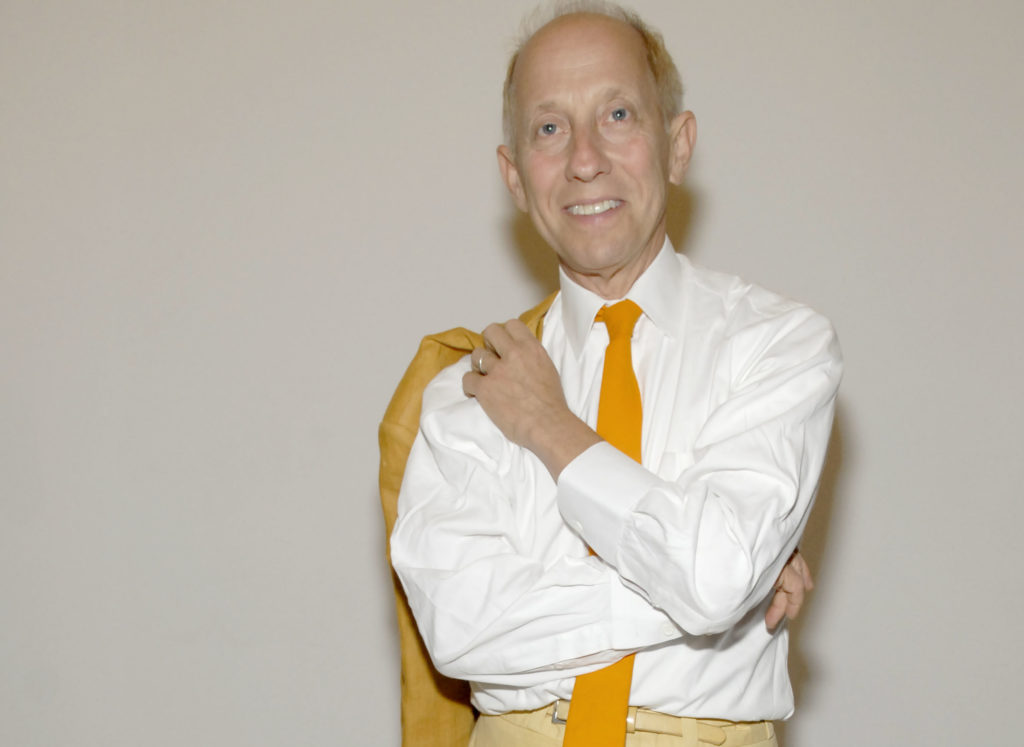
Knight Landesman in New York City. (Photo by ZACH HYMAN/Patrick McMullan via Getty Images)
In the wake of revelations about Harvey Weinstein’s decades-long pattern of abuse, women began telling their stories of workplace harassment in nearly every industry—including the art world. Longtime Artforum co-publisher Knight Landesman resigned in October after a string of sexual harassment allegations came to light and a former employee, Amanda Schmitt, filed a lawsuit against him and the magazine. To date, 22 men and women have accused the prominent art-world figure of harassment. Meanwhile, Armory Show director and former artnet News editor-in-chief Benjamin Genocchio, Jewish Museum curator Jens Hoffmann, and Dallas Museum of Art curator Gavin Delahunty resigned or were fired following allegations of workplace harassment or misconduct. Artist Chuck Close has also come under scrutiny for inappropriate behavior toward women he asked to pose for him, while collector François Odermatt has been accused of sexual misconduct and assault.
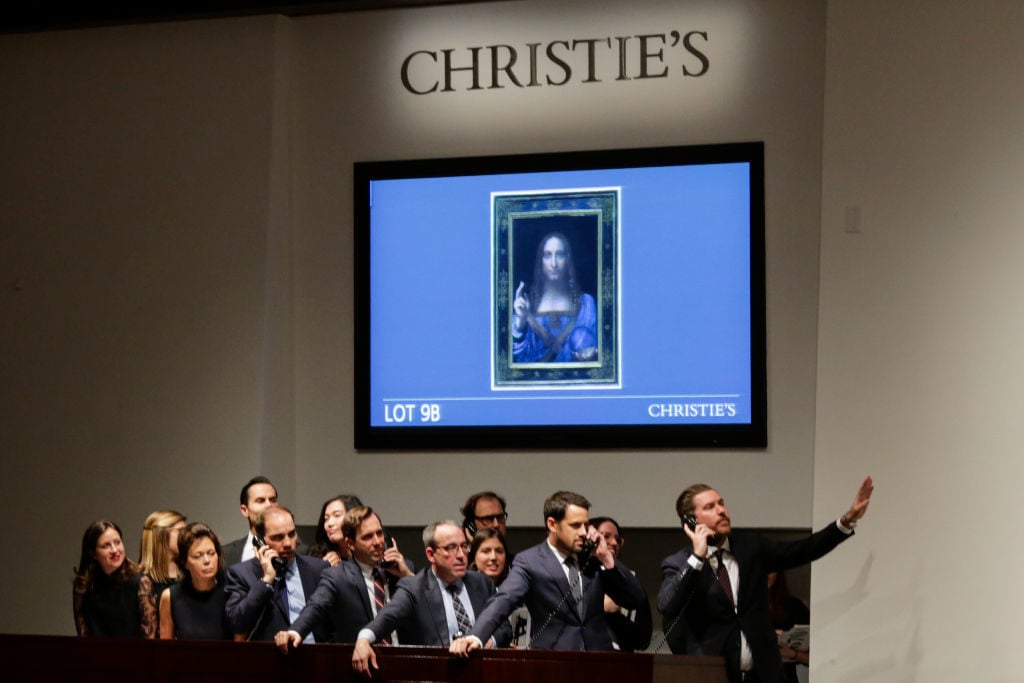
Bidding is underway for Leonardo da Vinci’s “Salvator Mundi” at Christie’s on November 15, in New York. Photo by Eduardo Munoz Alvarez/Getty Images.
Jaws dropped in November when Leonardo da Vinci’s Salvator Mundi sold for a record-shattering, mind-boggling $450.3 million at Christie’s. With the clang of a gavel, the painting became the most expensive work of art ever purchased—and perhaps the most commented upon as well. It seemed everyone with an internet connection had an opinion about the work, and some critics questioned its authenticity and condition. Jerry Saltz quoted a “well-known expert” who quipped that the painting had been included in Christie’s postwar and contemporary sale because “90 percent of it was painted in the last 50 years.” Meanwhile, former Met director Thomas Campbell, the work’s former owner, and a member of Christie’s staff got in an Instagram spat over its condition and conservation.
It was only after the sale, however, that the intrigue really began. Reports surfaced that the work had been purchased by Saudi Arabia’s crown prince as a gift for the Louvre Abu Dhabi. (The museum, which has stepped forward as the work’s owner, denies this and claims it simply asked one of the prince’s associates to bid on its behalf.) The drama is likely to spill over into 2018, but regardless of who bought it, the painting—and its staggering price—has become a pawn in a much bigger geopolitical game unfolding across the Middle East.
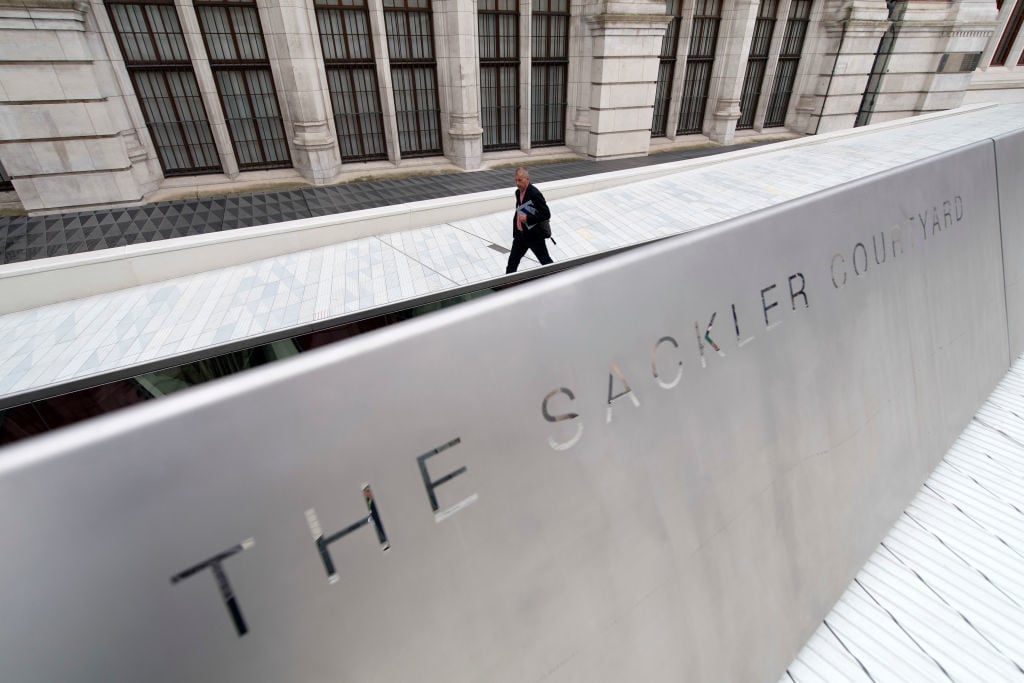
The Sackler Courtyard, a new addition to the Victoria and Albert Museum, was unveiled to the public in London on June 28. Photo: Justin Tallis/AFP/Getty Images.
Do museums have a responsibility to reckon with the source of a donor’s wealth? The question surfaced yet again following exposés in Esquire and The New Yorker that delved into the Sackler family’s fortune, a sizable portion of which was built on the sales of the narcotic painkiller Oxycontin. The Sackler name graces museum wings, courtyards, and galleries at more than a dozen museums around the world. In the US, many of the beneficiaries of Sackler largesse were funded by a branch of the family that did not benefit directly form the sale of the addictive drug. In the UK, funding came largely from Theresa and the late Mortimer Sackler, who, along with his brother, made a fortune from Oxycontin. Although some say museums should cut ties with the family, no institution in either country was willing to criticize the funders or the source of their wealth, according to an investigation by The Art Newspaper.
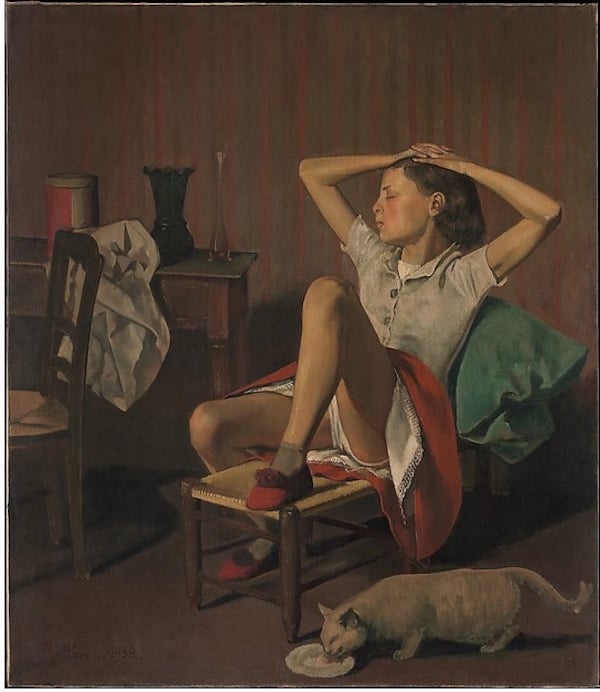
Balthus, Thérese Dreaming (1938). © 2017 Artists Rights Society (ARS), New York. Courtesy the Metropolitan Museum of Art
It seems only fitting that a year characterized by censorship debates would end with yet another. In December, the Metropolitan Museum of Art resisted pressure to remove a painting of a young girl by Balthus, Thérèse Dreaming (1938), which had been targeted by an online petition. The petition—which has garnered 11,560 signatures to date—states that the Met should not “proudly display” an image that “romanticizes the sexualization of a child.” The museum insisted that the painting would stay, calling the controversy “an opportunity for a conversation” about the “continuing evolution of existing culture.” Critics celebrated the Met’s response, noting that “if we remove the Balthus because it offends in the current climate, we pretty much have to remove whole wings of art from the Met.”